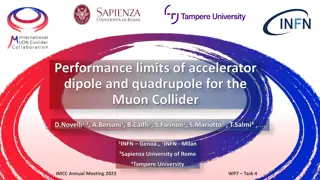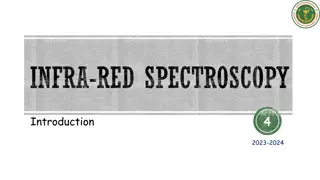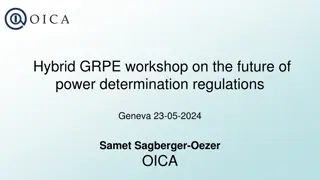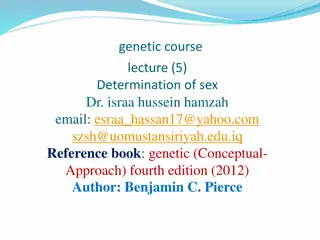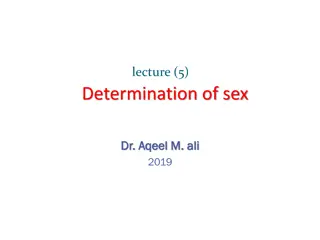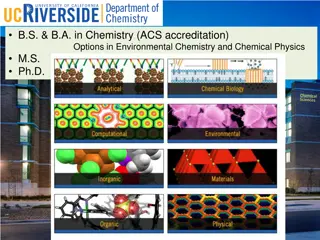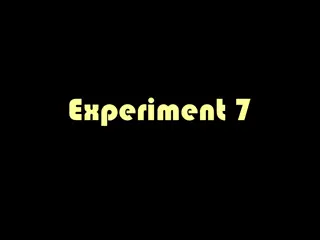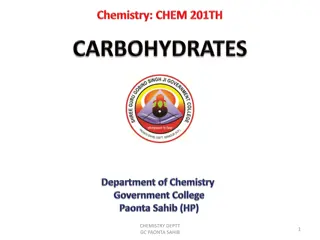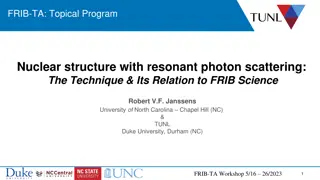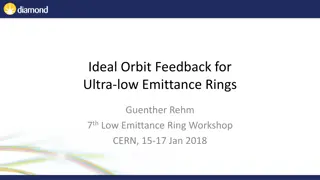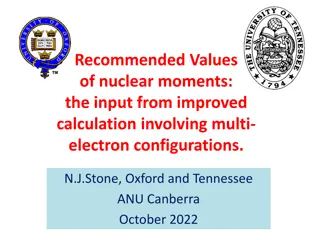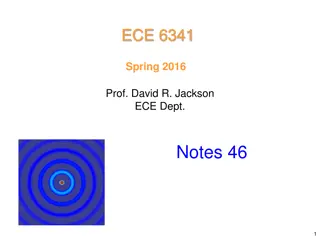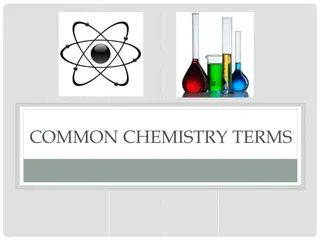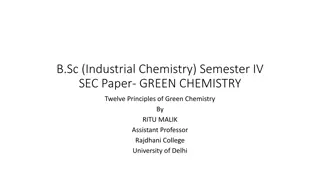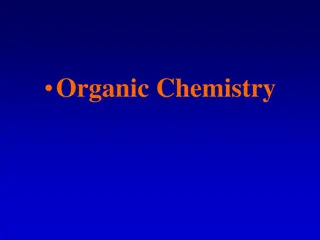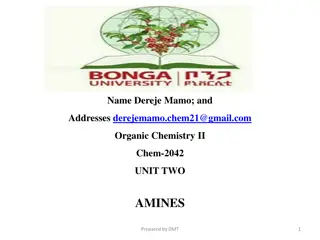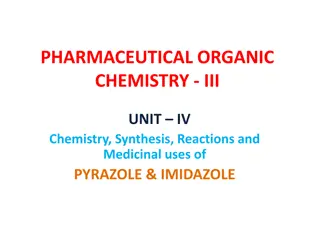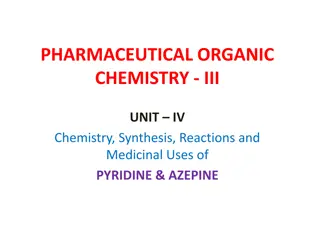Determination of Dipole Moment in Chemistry
The determination of dipole moment in chemistry involves methods such as the Temperature Method (Vapour Density Method) and Refractivity Method. These methods rely on measuring various parameters like dielectric constants and polarizations at different temperatures to calculate the dipole moment of molecules. The Temperature Method uses the slope of a plotted graph to determine the dipole moment, while the Refractivity Method focuses on the behavior of polar molecules in high-frequency electric fields. The limitations of these methods include experimental challenges and issues with measuring substances that decompose upon heating.
Download Presentation

Please find below an Image/Link to download the presentation.
The content on the website is provided AS IS for your information and personal use only. It may not be sold, licensed, or shared on other websites without obtaining consent from the author. Download presentation by click this link. If you encounter any issues during the download, it is possible that the publisher has removed the file from their server.
E N D
Presentation Transcript
Determination of dipolemoment Name of the instructor : U.Nithya M.Sc.,M.Phil.,
Determination of dipolemoment: a) Temperature method (Vapour Density Method) polar molecules P=PI+ Po
This equation may be written in the form P= A+ B/T The slope of the line is given by from which diPolemoment can be calculated
We further know that Dielectric constant D and the p of a vapour are measured at a series of temperature,P,the total molar olarization is calculated from above equation for various temperature. Pis plotted against 1/T We get a straight line. The slope of the line gives B.
For polar molecules we can calculate the dipolemoment from the sloe of the curve eg. CH3 Cl, HCl From non polar molecules dipolemoment equal to zero,soB=0. Therefore the plot of p against 1/T is parallel to the 1/T axis.ie the total molar polarisation is independent of temperature eg.ccl4,cH4. LIMITATIONS OF THE METHOD: 1. The experimental part itself is difficult 2. For substance which decompose on heating the dipolemoment cannot be measured by this method.
Refractivity method: The temperature method described above has a restricted use because the temperature range available for making the measurement is limited. so refractivity method is used. This method depends upon the behaviour of polar molecules in the alternating field of high frequency. If an electric field is suddenly turned off or the field is reversed suddenly the polar molecules held in the field will require a finite time to lose their partial allignment and to reach a state of random or new orientations. This time telaxation is called relaxation time. if this reversal is done at low frequences the molecule can follow the field and total molar polarisation P remains constant. At higher frequencies the molecule cannot stay in phase with the field. The totalmolar polarisation decreases due to a decrease in orientation polarisation P0 This occurs near a frequency range of 1010-1012Hz
At still higher frequencies thus only the induced polarisation PIremains. This induced polarization results from the displacement of both electrons and nuclei in the alternating field and PI =PE+PA. At still higher frequencies,as a result total molar polarisation decreases once again. At higher frequencies direct measurement of capacitance is thus not possible and the only conviently measurable Property to determine dielectric constant is the refractive index which according to the Maxwell s Theory can be expressed as. D=n2 Thus the clausius Mosotti equation then becomes
Dilute solution method This method is based on the assumption that ehen a polar substance is dissolved in a non polar solvent the total polarisation of the dilute solute is equal to the sum of the polarizations of the solvent and the solute. Thus Psolu= xAPA+xBPB Where xAand xB are the mole fractions of the non polar solvent and solute respectively. PA and PBare their polarizations. MAand Mbare the molecular weight of the solvent and solute p is the density of the solutions Psolu= [D-1/D+2] [xAMA+xBMB/p]
By measuring the dielectric constants of the solution and solvent PA and Pbcan be measured knowing the composition of the solution we can get the values of XAand XB. From these PB can be calculated using the above equation.



